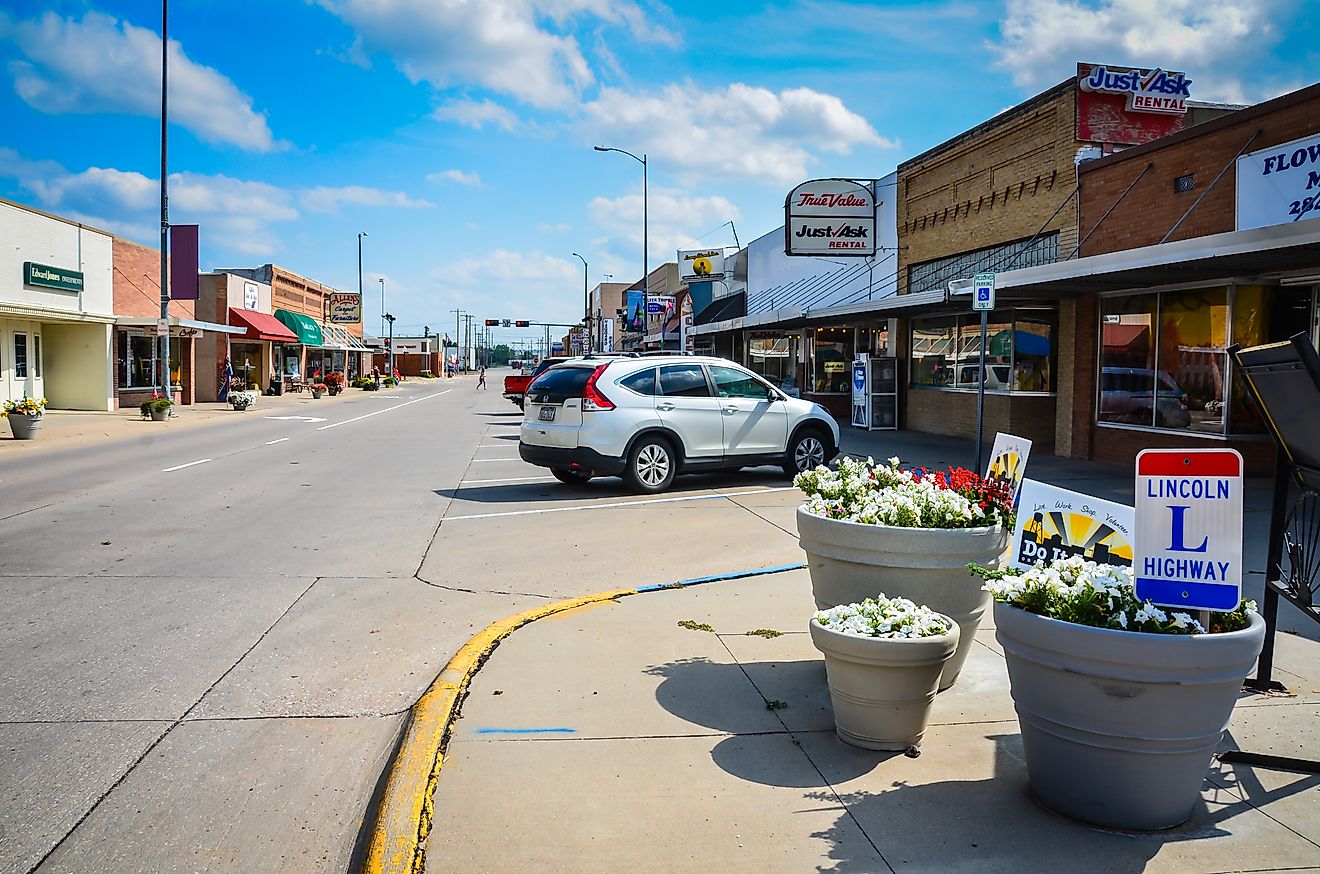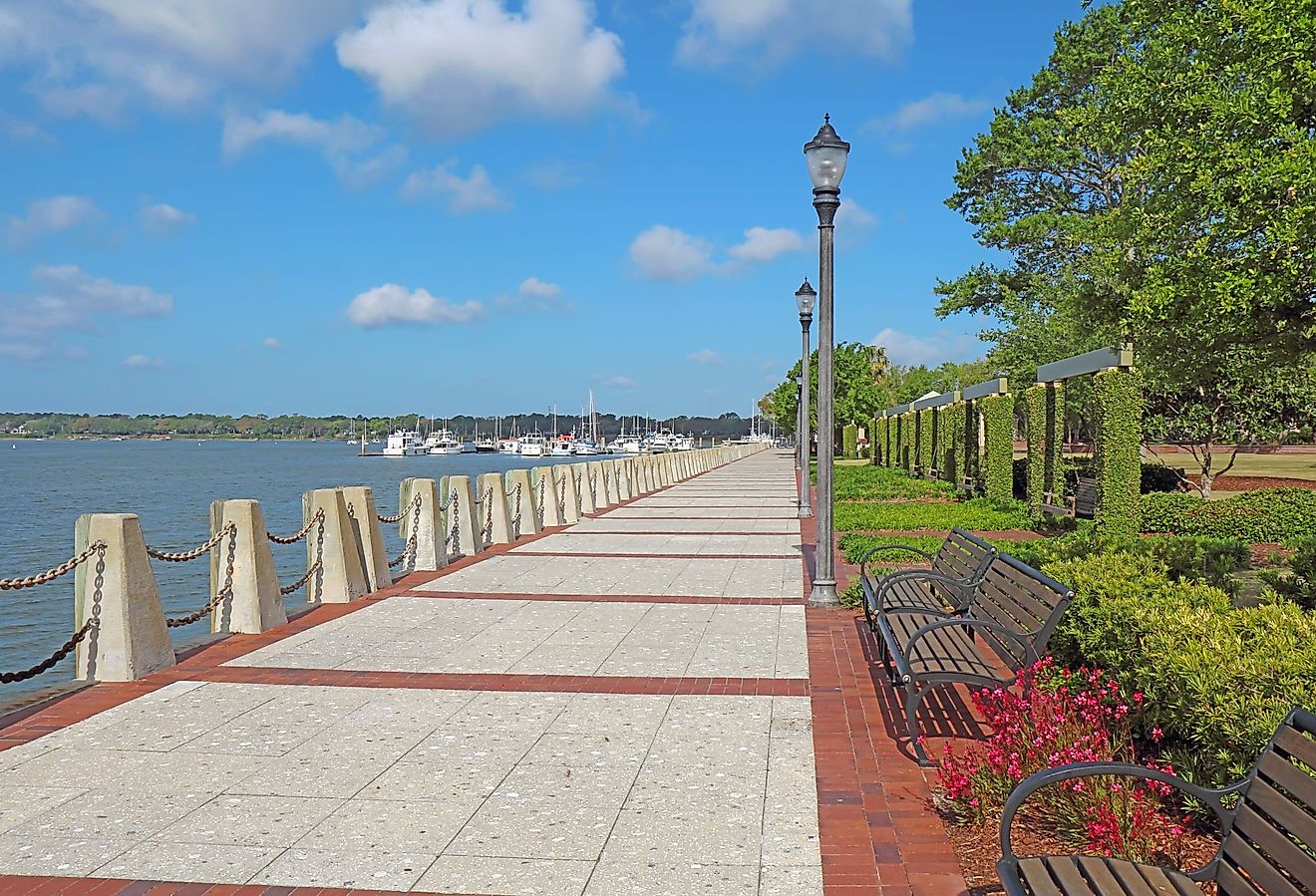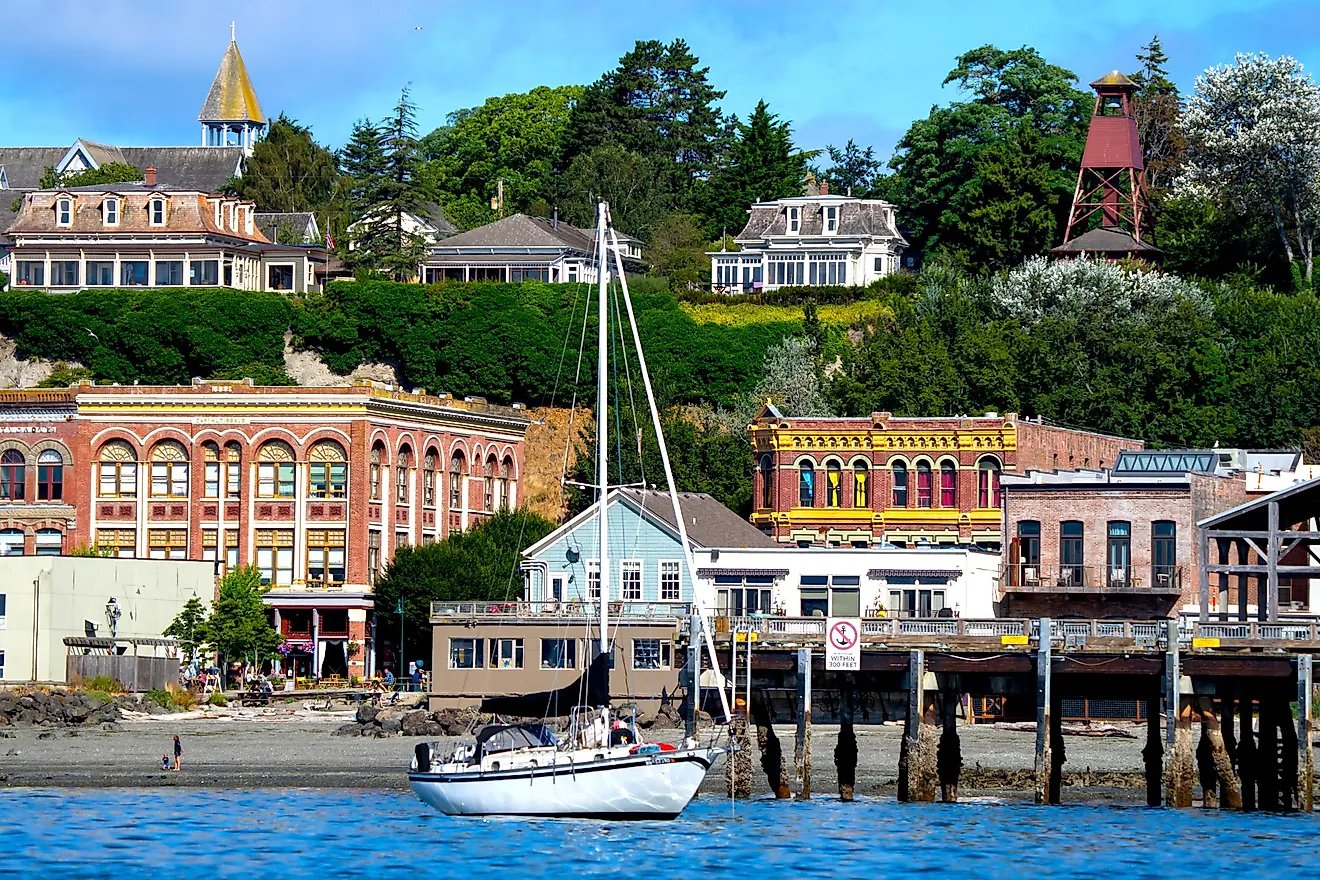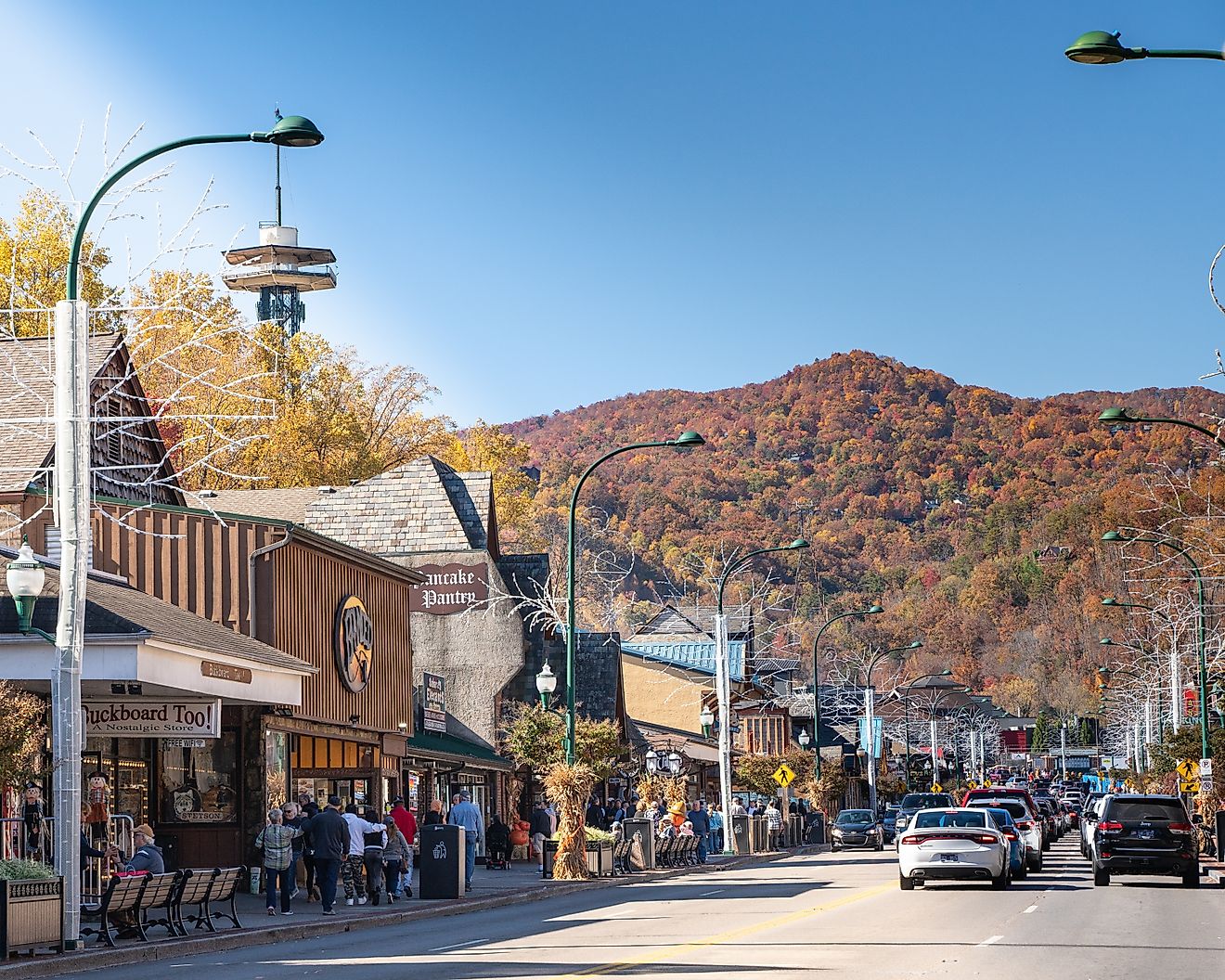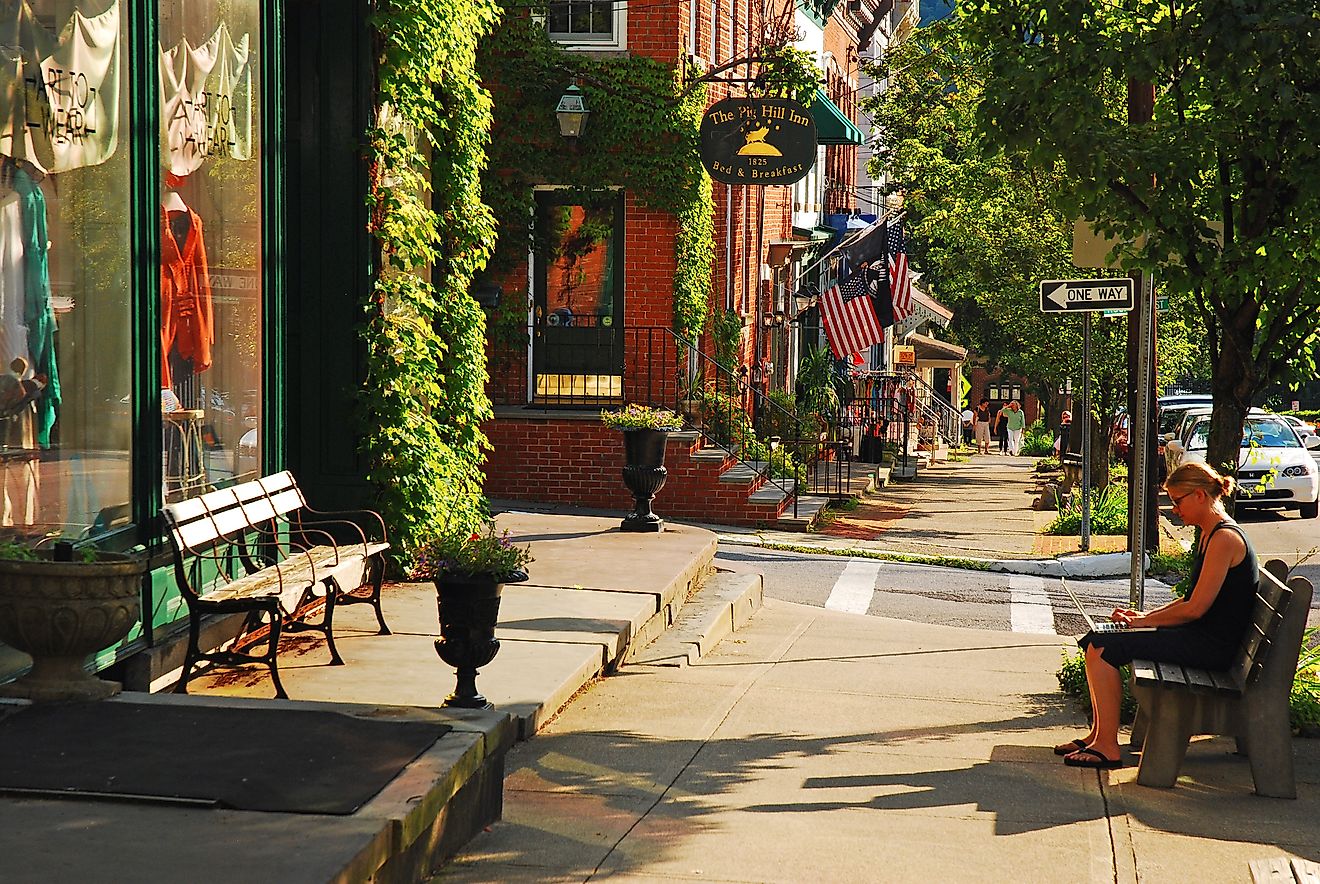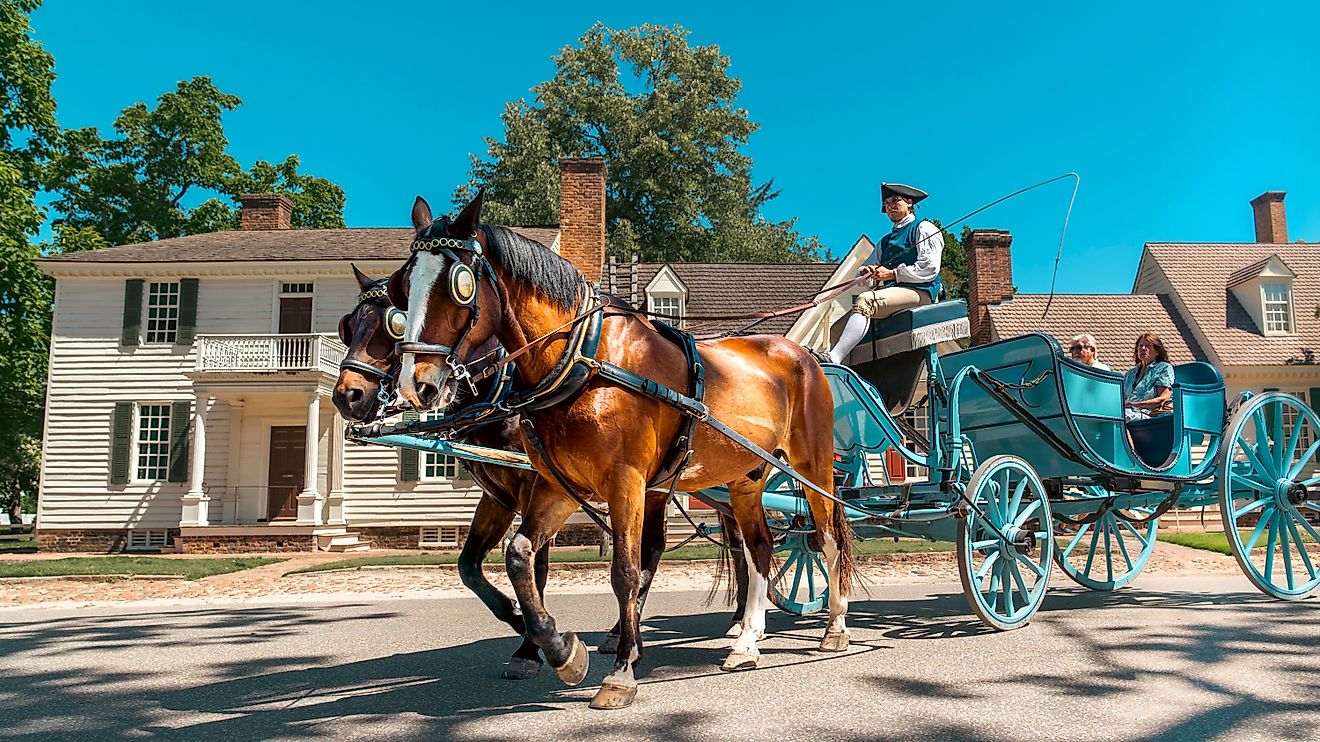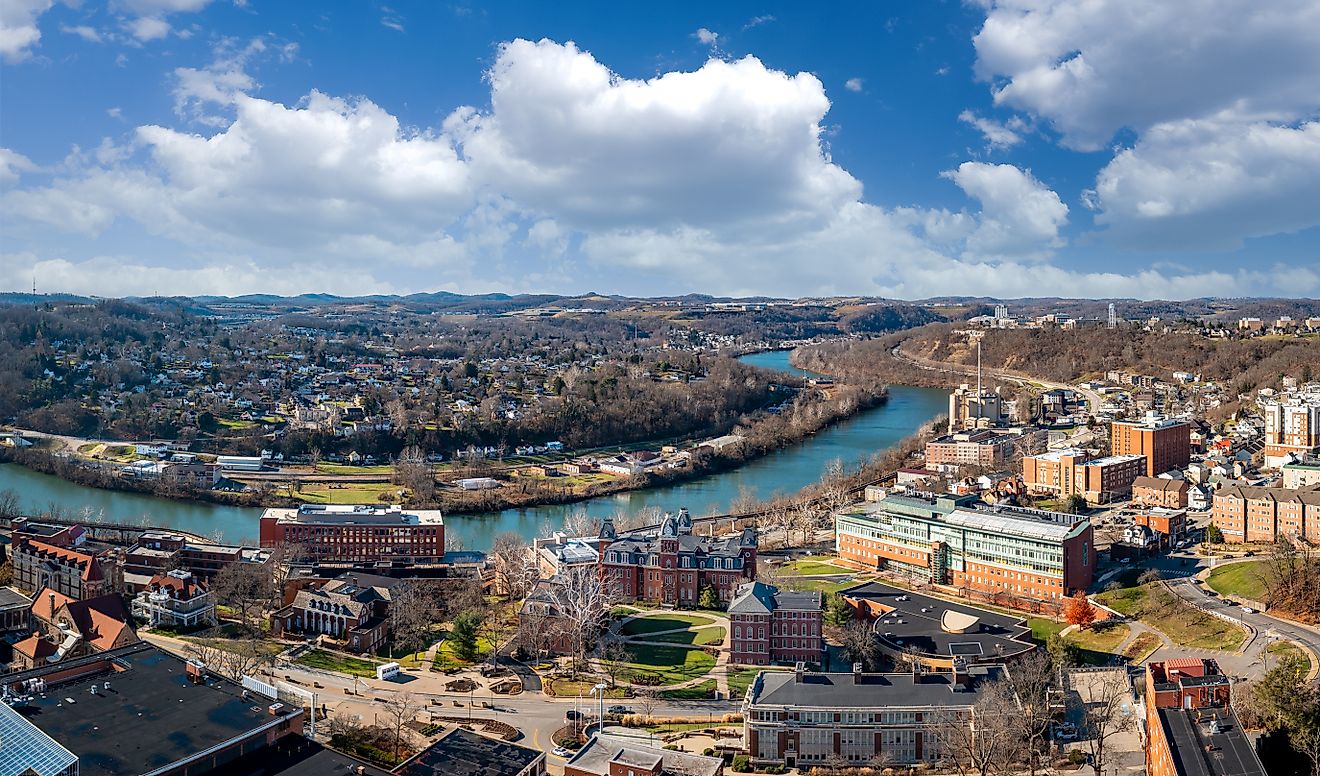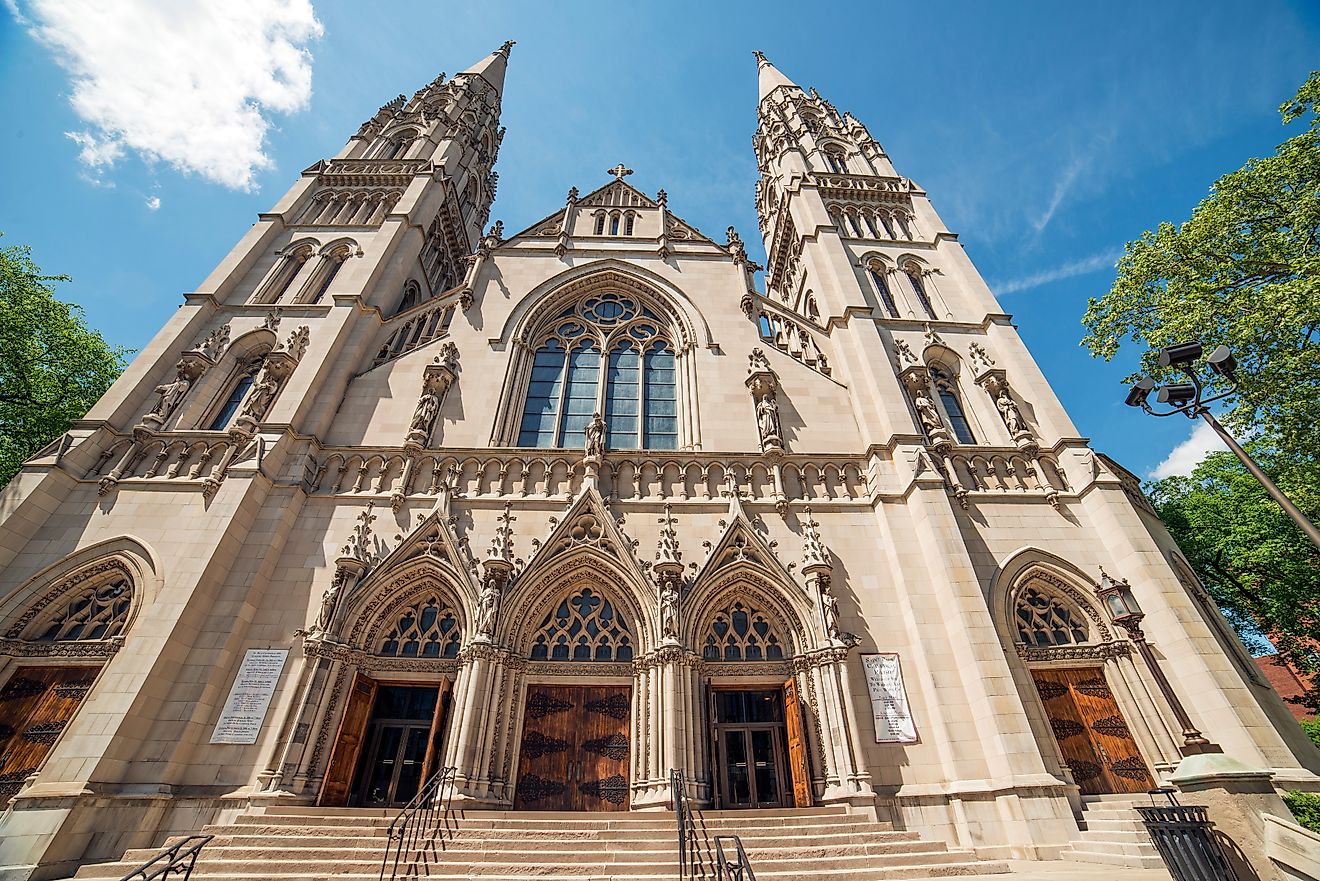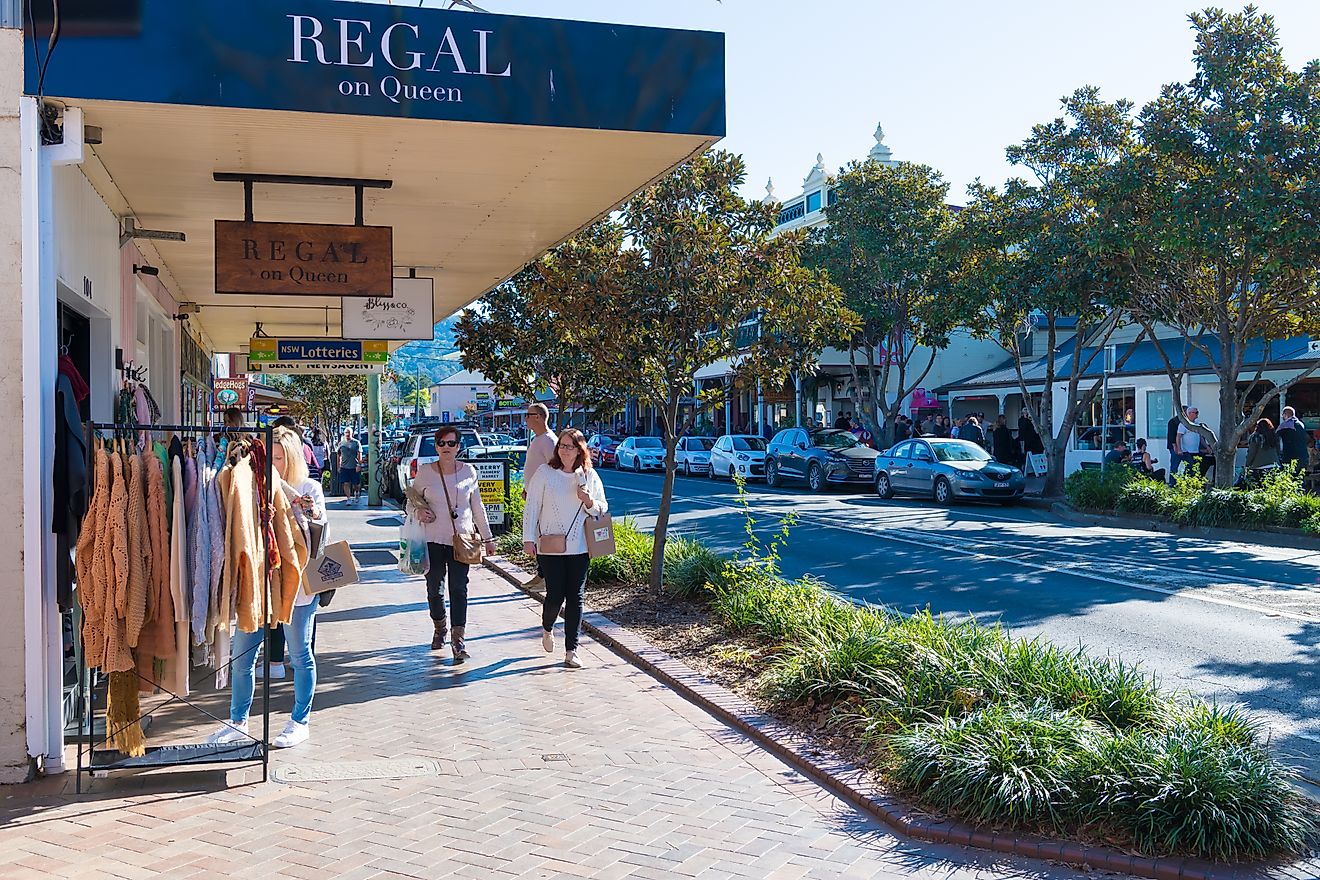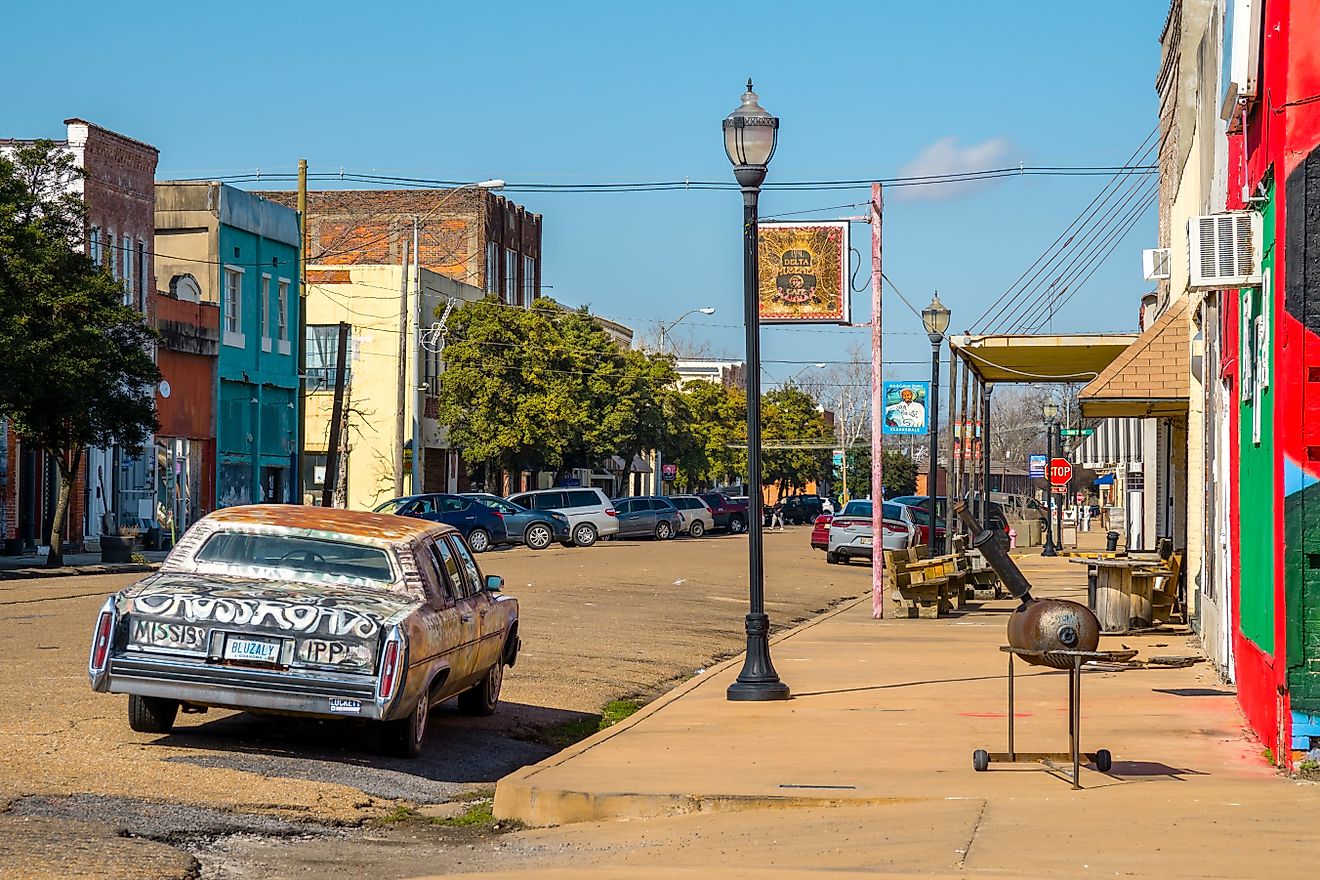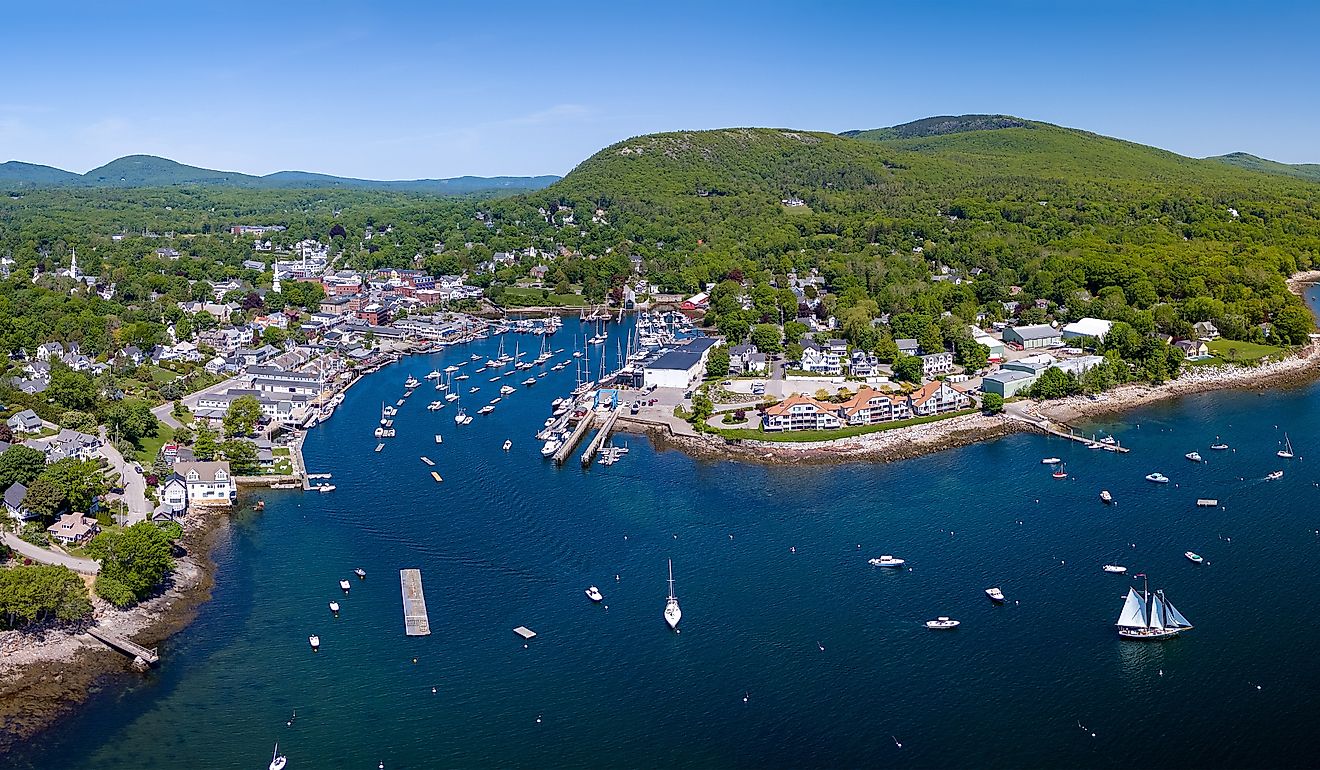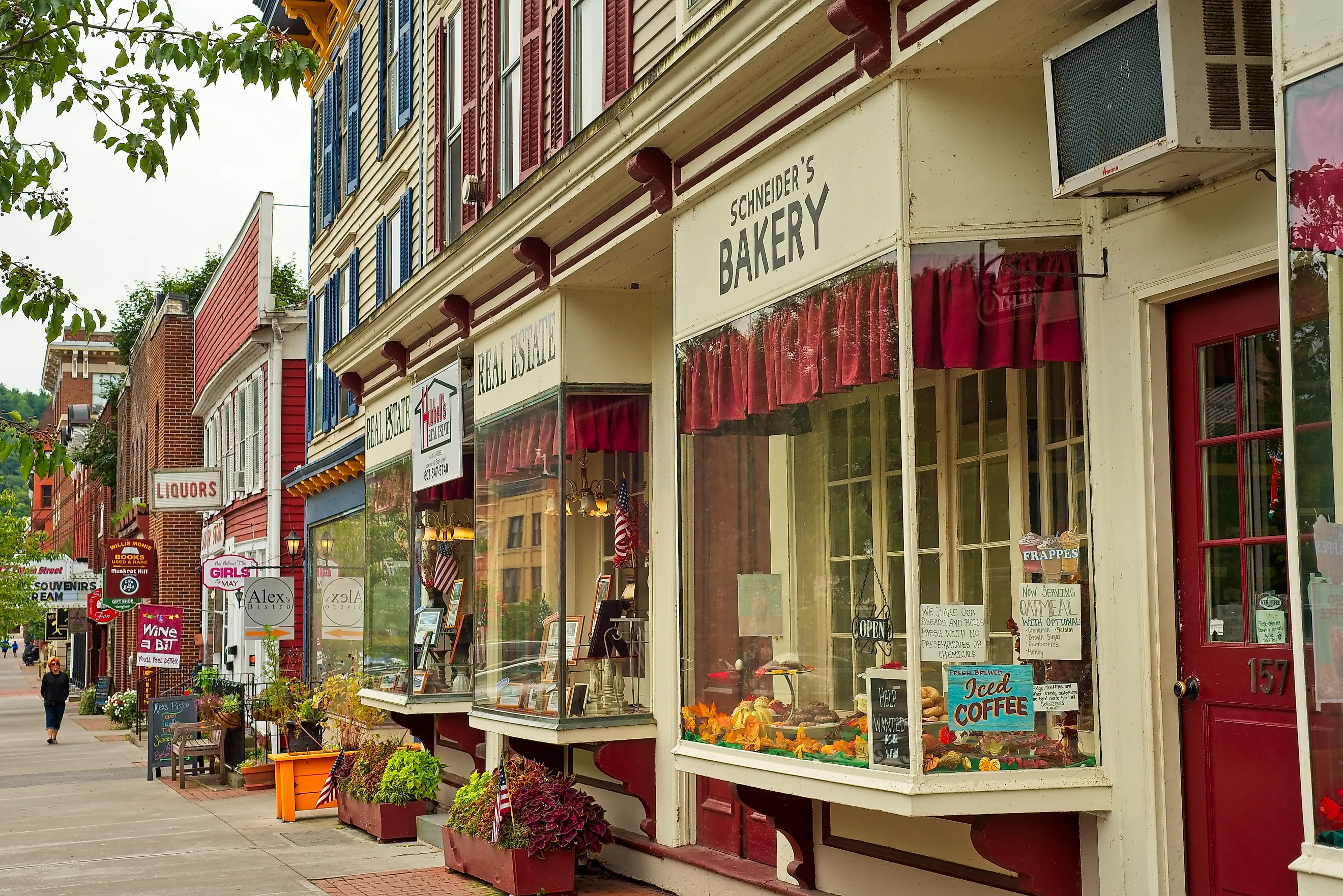
10 Stress-Free New York Towns For A Weekend Retreat
The speed of New York changes the moment steel tracks meet river light. As the train bends past Storm King or a two-lane road slips into dairy country, the state reveals a network of towns built for unrushed hours, compact main streets, human-scale storefronts, and water or woods at the edge of town. This guide focuses on places where the setting works: views that require no tickets, paths that start at the sidewalk, and a center you can cross in the time it takes to finish a coffee.
To keep the weekend low-friction, every pick meets a simple filter: population under 50,000; a walkable core with independent shops; direct access to a river, lake, or trail within about ten minutes on foot; and at least one small inn or historic hotel with fewer than 100 rooms. The result is ten towns that trade itineraries for proximity, art spaces inside old factories, piers where ferries still dock, boardwalks across marshland, and porches that face open water. You won’t find theme parks or multi-lane highways running through these centers. You will find the kind of New York that keeps banker’s hours, where closing time is an asset and silence is part of the draw.
Cold Spring
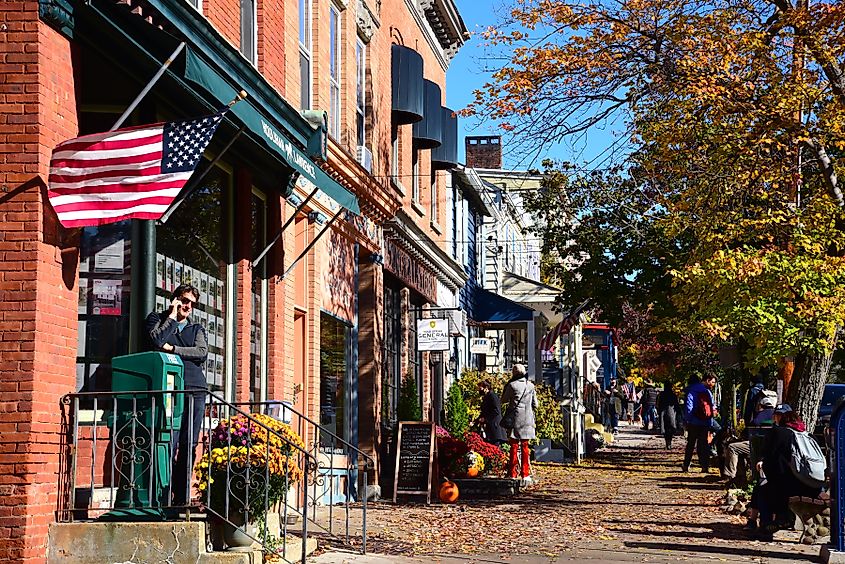
Cold Spring sits quietly on the east bank of the Hudson River, framed by the stone bluffs of the Hudson Highlands. A former 19th-century foundry town that once supplied cannons for the Union Army, it now trades in stillness and river light. The town’s compact grid, left nearly untouched since the Civil War, is fully walkable within 15 minutes. But its true rarity lies in its setting: the village faces Storm King Mountain across the river, which dominates the horizon like a sentinel and draws photographers year-round.
Four blocks from the train station, Dockside Park offers open grass and uninterrupted river views, often empty even on weekends. On the opposite edge of town, Foundry Dock Park leads into Constitution Marsh, where a floating boardwalk winds through cattails, a quiet place for watching herons and tides. Poor George on Main Street offers a tight, curated experience for antiques and paper ephemera. The Hudson House River Inn, a 19th-century brick lodging on the waterfront, provides views directly over the river, and its quiet, formal dining room feels decades removed from the city’s pace.
Beacon
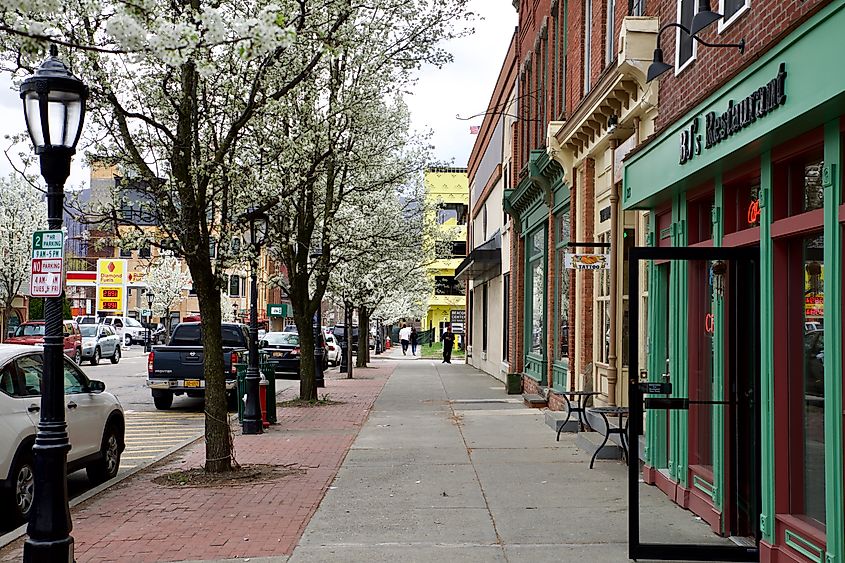
Beacon was once a factory town producing bricks, hats, and rubber; now it’s home to one of the most prominent contemporary art museums in the U.S., Dia Beacon, in a former Nabisco box-printing plant. Dia Beacon covers over 240,000 square feet and anchors the town’s cultural identity. Its arrival in 2003 reshaped Main Street into a linear mix of minimalist galleries, plant shops, and espresso counters, stretching nearly a mile. On the western end of town, the train drops visitors almost directly into Long Dock Park, a flat riverside expanse used for kayaking, sketching, and cloud-watching, where freight trains thunder by only feet from the water.
Key spots remain understated. Big Mouth Coffee Roasters roasts on-site and serves reliably quiet weekday mornings. Across the street, Zakka Joy offers an unfiltered mix of ceramics, linens, and stationery. From the base of Wolcott Avenue, the Mount Beacon Incline Railway trail begins with a sharp stone stairway, short but punishing, with clear views over the Hudson Valley from the top. The Roundhouse, built into a repurposed industrial complex, sits beside a powerful waterfall and offers loft-style rooms overlooking Fishkill Creek. The in-house restaurant faces directly onto the falls and is one of the only spaces in Beacon where the water drowns out everything else.
Hudson
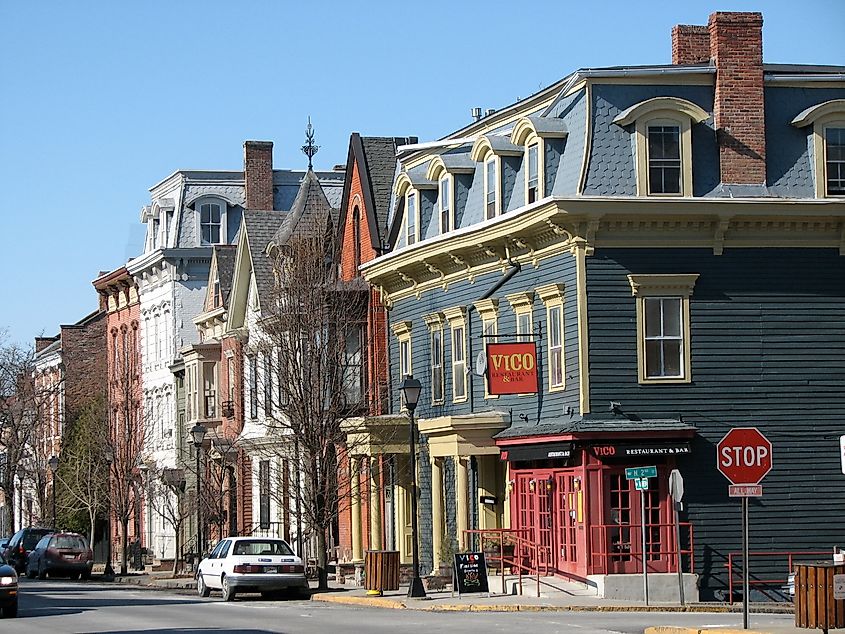
Hudson is the only city in New York State founded by whalers. In the 1780s, seafarers from Nantucket and Martha’s Vineyard chose this inland spot, 120 miles from the ocean, for its strategic access to the Hudson River and insulation from British attacks. That stubborn independence still marks the city. Its long spine, Warren Street, runs from the Amtrak station uphill past 19th-century townhouses and iron-front facades now occupied by book dealers, vintage furniture shops, and small-press art galleries. The town's dense layout and preserved scale keep everything accessible on foot without losing momentum.
Basilica Hudson, a converted glue factory, south of the main strip, hosts offbeat installations, screenings, and experimental music performances. A few blocks away, the Hudson Area Library shares space in a repurposed armory and houses one of the state's most carefully maintained local history rooms. Grazin’ Diner sources all meat and produce from its own Kinderhook farm and serves it inside a 1940s stainless-steel railcar. Promenade Hill Park offers benches facing west across the Catskills for quiet reading and river views. The Maker Hotel occupies three restored buildings, including a cocktail lounge in a former carriage house and an all-day café surrounded by Victorian moldings and contemporary art.
Woodstock
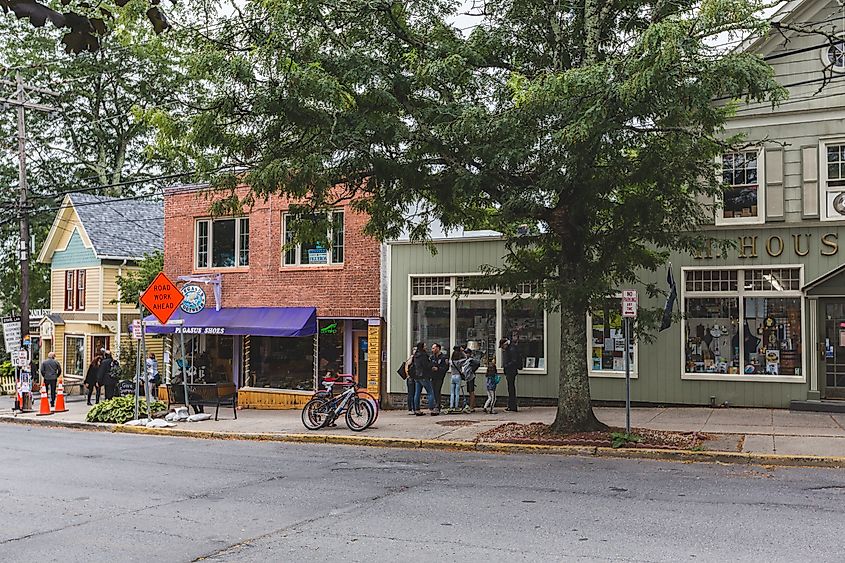
Woodstock was never the site of the 1969 music festival, but its name defined the counterculture. Long before that, it was the birthplace of Byrdcliffe, one of the earliest Arts and Crafts colonies in the U.S. That legacy persists in the number of working artists, musicians, and sculptors still living within walking distance of Tinker Street. The village is small, framed by Overlook Mountain and a bend in the Sawkill Creek, with footbridges connecting studios, bookstores, and backyard coffee shops.
At the edge of town, the Comeau Property offers meadow and creekside walking trails from the town offices. In the center, the Woodstock Artists Association & Museum exhibits work from local and regional painters, many living just outside the hamlet. Maverick Concert Hall, located in a hand-built 1916 wooden structure in the woods, hosts chamber music throughout summer weekends with a strict no-amplification policy. Woodstock Way Hotel, tucked along the creek just off the main drag, incorporates salvaged materials from the area’s old sawmill and offers direct paths into town without crossing Route 212.
Saugerties
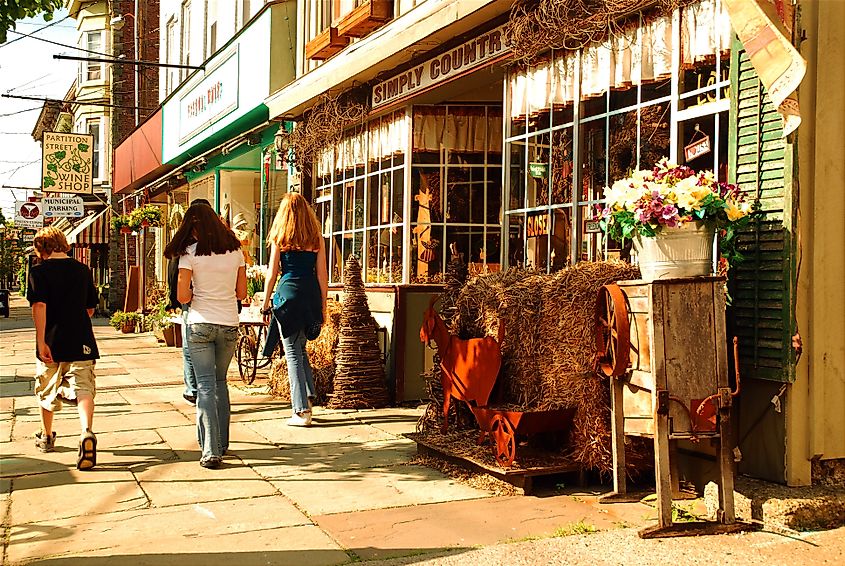
Saugerties was once known for its ice industry, cut from the Hudson River and shipped to New York City, and remnants of its industrial history remain embedded in its riverbanks and old mill buildings. Its dual access to water sets it apart today: both the Hudson and the Esopus Creek shape the town physically and visually. The Saugerties Lighthouse, reachable by a half-mile trail over tidal flats, still operates as a beacon and overnight inn—the views from its deck stretch south toward the Kingston-Rhinecliff Bridge and east across marshland.
Inland, Opus 40, a massive bluestone sculpture built single-handedly by Harvey Fite over nearly four decades, sits just outside town limits. Its undulating ramps and dry-laid terraces rise out of an abandoned quarry and remain open to walkers most of the year. The Esopus Bend Nature Preserve offers shoreline trails just west of the village, where herons and turtles congregate in slow pools. Diamond Mills Hotel, built alongside a 30-foot waterfall on the Esopus, includes balconies that face the current and a short path leading directly into the village’s central blocks.
Lake Placid
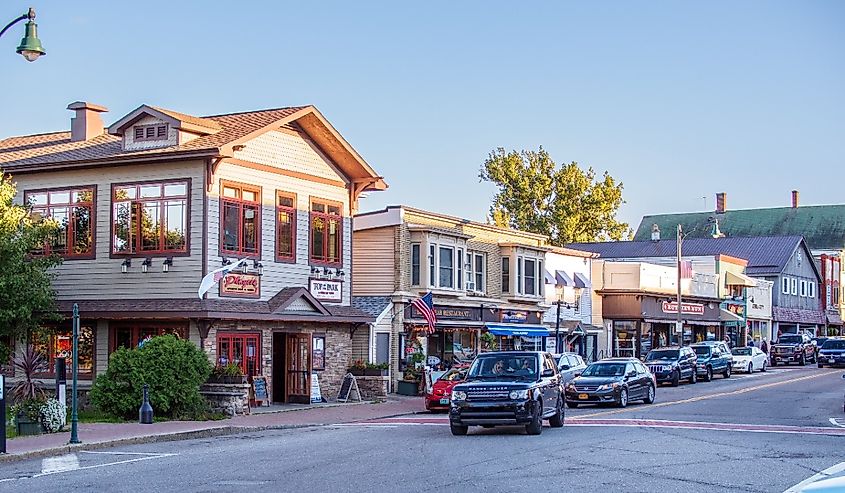
Lake Placid hosted the Winter Olympics twice, 1932 and 1980, making it one of only three places in the world to do so. Despite that history, the town moves at a slower rhythm than its reputation suggests. Its center curls around Mirror Lake, not the larger Lake Placid proper, and its flat, two-mile lakeside loop walk remains the town’s most dependable draw. The Olympic legacy lives quietly in the Lake Placid Olympic Museum in the same complex where the “Miracle on Ice” took place. The building also houses an indoor skating rink, which is still used daily by locals and visiting athletes.
Just outside town, High Falls Gorge offers a short, elevated trail over steel bridges that cross above churning water and pools carved by glacial movement. Downtown, Origin Coffee Co. serves seasonal plates in a bright space attached to a greenhouse, with ingredients grown on-site or nearby. The Lake Placid Public Library sits in a Tudor-style building overlooking the lake, with chairs set under tall windows for reading or quiet time. Mirror Lake Inn Resort & Spa, built in 1924, has direct water access, lakeview porches, and a short walking path into the village center. Many of its rooms face the water and stay insulated from noise and weather.
Skaneateles
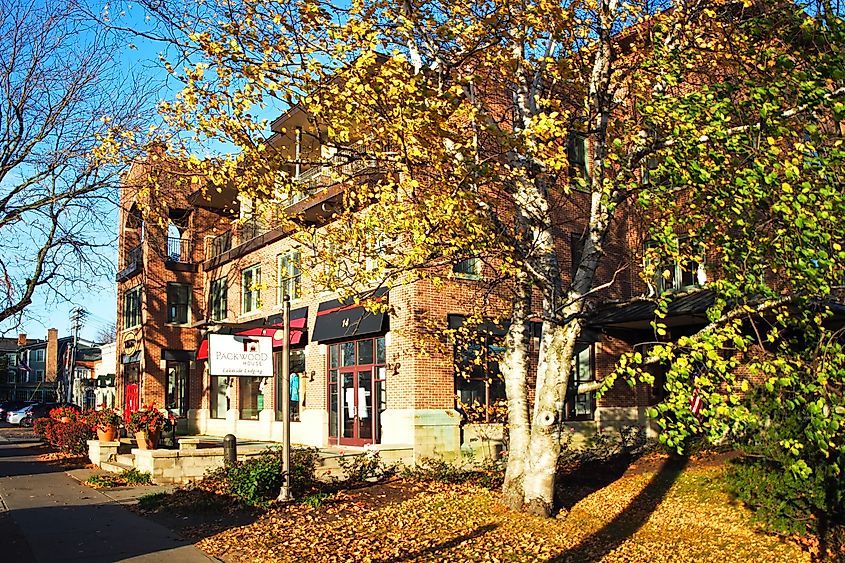
Skaneateles takes its name from the Iroquois word for “long lake.” Its position at the northern tip of Skaneateles Lake defines the town entirely. The water here is so clear that it’s used unfiltered as the drinking supply for nearby Syracuse. The village is set back just enough to keep the lakefront visible from nearly every block. Stone piers stretch into the water, and wooden benches line Clift Park, where steamboats once docked. The town’s visual center remains Skaneateles Pier, where the Judge Ben Wiles boat departs for short cruises that pass hemlock-covered cliffs and shoreline estates.
One block up from the lake, Gilda’s on Genesee Street serves wood-fired pizza and small plates inside a narrow, brick-walled space that fills by midafternoon. Across the street, Skaneateles Bakery supplies strong coffee and house-made cider donuts year-round. Long Point State Park sits five miles down the east side of the lake, offering a lawn with uninterrupted water access and space for picnics or reading. For wine, Anyela’s Vineyards sits on a slope above the west bank and often opens its hillside patio for tastings. The Mirbeau Inn & Spa, modeled after a French country estate, offers rooms around lily ponds and quiet garden footpaths.
Cooperstown

Cooperstown was named not for baseball but for William Cooper, father of novelist James Fenimore Cooper, who set The Last of the Mohicans in the surrounding forests. The village sits at the foot of Otsego Lake, a nine-mile glacial lake the author called Glimmerglass. Cooperstown’s downtown is less than five blocks, ending at a bandstand and the lakefront lawn. The National Baseball Hall of Fame anchors the south end of Main Street, but stays quiet outside induction weekend. The building’s exhibits document over a century of American culture through the lens of the sport, not just its icons.
On the lake’s western bluff, the Fenimore Art Museum displays 19th-century portraiture and a notable collection of Native American artifacts, housed in a mansion built over James Fenimore Cooper’s original homestead. The Farmers’ Museum, across the road, replicates a 19th-century rural village with working blacksmiths and heirloom livestock. For food, Schneider’s Bakery opens by 6 a.m. with hot glazed crullers and German-style cookies. Outdoor space extends beyond town at Three Mile Point, a lakeside park with swimming access and canoe launch. The Otesaga Resort Hotel, a columned structure facing Otsego Lake, includes a wraparound veranda and private shoreline, with walking access to the entire village.
Greenport
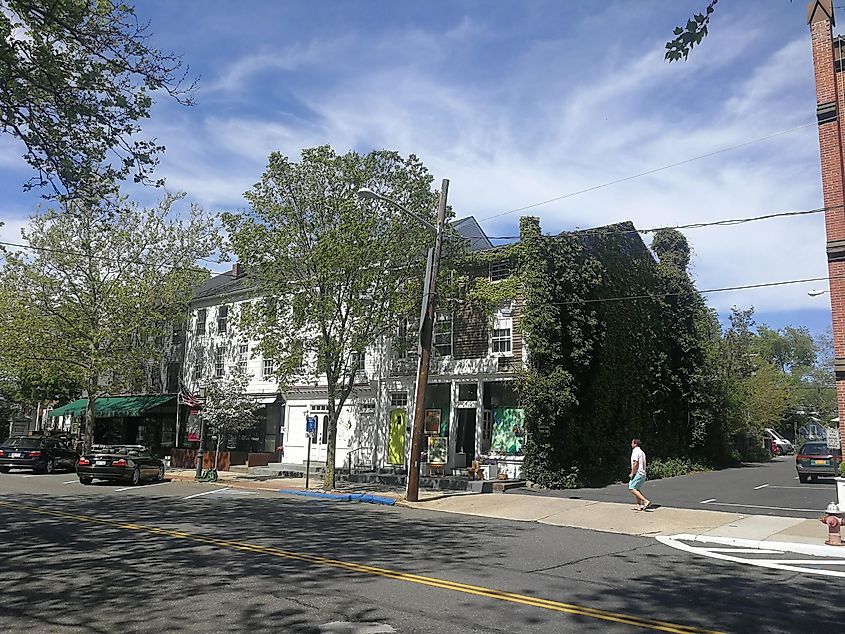
Greenport was once a whaling port and later a shipbuilding hub, but today its harbor remains active with passenger ferries, fishing charters, and transient sailboats. The village occupies the northeastern edge of Long Island’s North Fork and faces Shelter Island across a narrow strait. What distinguishes Greenport from other East End towns is its maritime infrastructure: docks, boatyards, and a deepwater harbor that draw working vessels year-round. Mitchell Park sits at the center, with a boardwalk, marina, and a wooden carousel built in 1920 that still operates under a glass pavilion.
The East End Seaport Museum, located in a former railroad station, documents the area’s long marine history and organizes lighthouse tours throughout the summer. On Front Street, Aldo’s Coffee Company roasts on-site and serves espresso without Wi-Fi or outlets, intentionally limiting screen time. A mile east, Kontokosta Winery overlooks the Long Island Sound and includes a lawn with Adirondack chairs facing the bluff. The property is one of the only vineyards on the North Fork with direct waterfrontage. Sound View Greenport, built in the 1950s as a roadside motel, now includes rooms that open directly onto a private pebbled beach and a restaurant, The Halyard, serving shellfish from nearby Peconic Bay.
Aurora
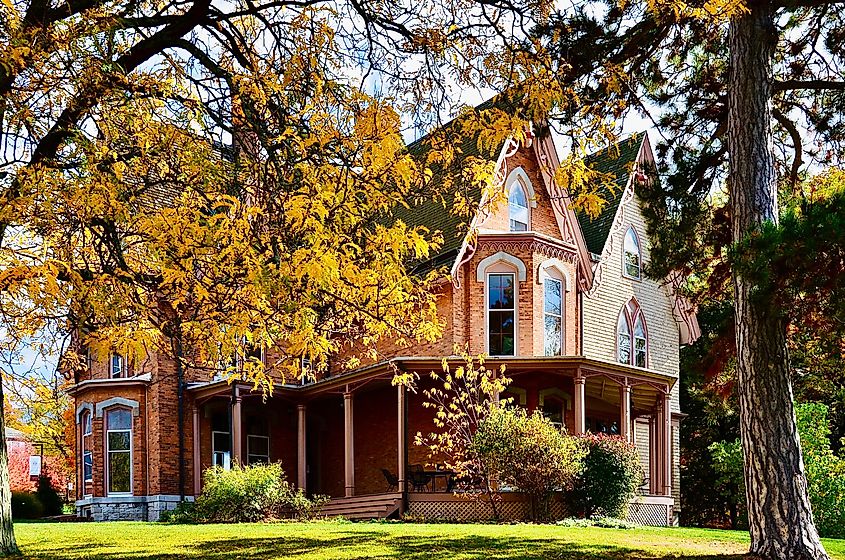
Aurora occupies less than one square mile along the eastern shore of Cayuga Lake and is built almost entirely around Wells College. Founded in 1868 as a women’s seminary, Wells College ceased operations in 2024; its campus still shapes the village’s appearance, and brick buildings, expansive lawns, and footpaths frame nearly every view. Most of the town was restored in the early 2000s under the direction of Pleasant Rowland, founder of the American Girl company and a Wells alumna. That preservation effort left Aurora with a unified visual character, from the post office to the general store.
The Inns of Aurora operates several restored 19th-century properties across the village, each with lake access and curated interiors. Their Spa at the Schoolhouse sits just uphill, surrounded by farmland, with outdoor pools and treatment rooms overlooking the lake. For a direct lake experience, Long Point State Park lies two miles south, offering quiet access to Cayuga’s shoreline without marina traffic. The Fargo Bar & Grill serves burgers and local beer.
Across these towns, stress relief comes from scale: cores you can cross in minutes, water within sight, and lodgings designed for quiet nights. Metro-North reaches Cold Spring and Beacon; Amtrak drops at Hudson; others favor a short drive. Weekdays and shoulder seasons preserve boardwalks and museum floors. Each place supports car-light weekends—inns near trails, cafés near docks—so time tilts toward walking, pausing, and watching New York trade velocity for hush.
